AI is playing an increasingly prominent role in enhancing the shopping experience for consumers. It has been leveraged to streamline operations, personalize recommendations, optimize pricing strategies, and improve overall customer satisfaction. For highly anticipated annual sales events like Black Friday and Cyber Monday (BFCM), AI tools possess even greater potential for driving customer engagement and sales. In this article, we’ll explore how brands and shoppers are using this mission-critical technology leading up to the biggest sale season of the year.
BFCM Remains the Biggest Shopping Weekend of the Year
With 130.2 million online shoppers during BFCM 2022, and 59% of Cyber Monday shoppers transacting on mobile devices, it’s clear that the convenience of online shopping is winning over holiday shopping deal hunters. Online, customers can effortlessly compare prices, read reviews, and thoroughly research products before finalizing their purchase. As the retail landscape continues to evolve, however, there is a growing role and expectation for AI tools to further enhance the eCommerce experience.
AI-powered features are invaluable tools in the shopping journey. They have the potential to enable customers to easily find the items they desire, even discovering new and relevant products they may have overlooked otherwise. These tools are also able to immerse shoppers into the experience in such a way that resonates and captivates.
The personalized customer journey is taken as a given by the modern customer – 71% of consumers expect personalized interactions from companies and 76% become frustrated when this doesn’t happen. Failure to do so comes at a high cost: 62% say a brand will lose their customers’ loyalty if they deliver a non-personalized experience. And, while brands and retailers have already implemented AI for various business needs, such as productivity and operational cost reductions, other areas like customer satisfaction and personalization are lagging. eCommerce companies can’t afford to drag their feet – keeping up with the evolving technology is necessary for gaining a competitive advantage – especially when it comes to Black Friday and Cyber Monday.
The following are some of the key ways we will see brands and retailers using AI to deliver superior experiences this Black Friday weekend.
1. Review summaries
AI is being used to generate review summaries automatically, helping customers make informed decisions in their purchases. Shoppers can simply request a summary of what people are saying about a specific product, and the AI-powered system swiftly generates an overview. This functionality saves customers time and effort by providing a concise and informative snapshot of the overall sentiment and opinions expressed in the reviews. The summary is worth it – almost half of customers trust online reviews as much as recommendations from family and friends. As shoppers rush from site to site to make the most of BFCM deals, AI-summarized reviews are a good way to ensure they get the information they need and can move quickly to purchase, rather than dropping off in frustration.
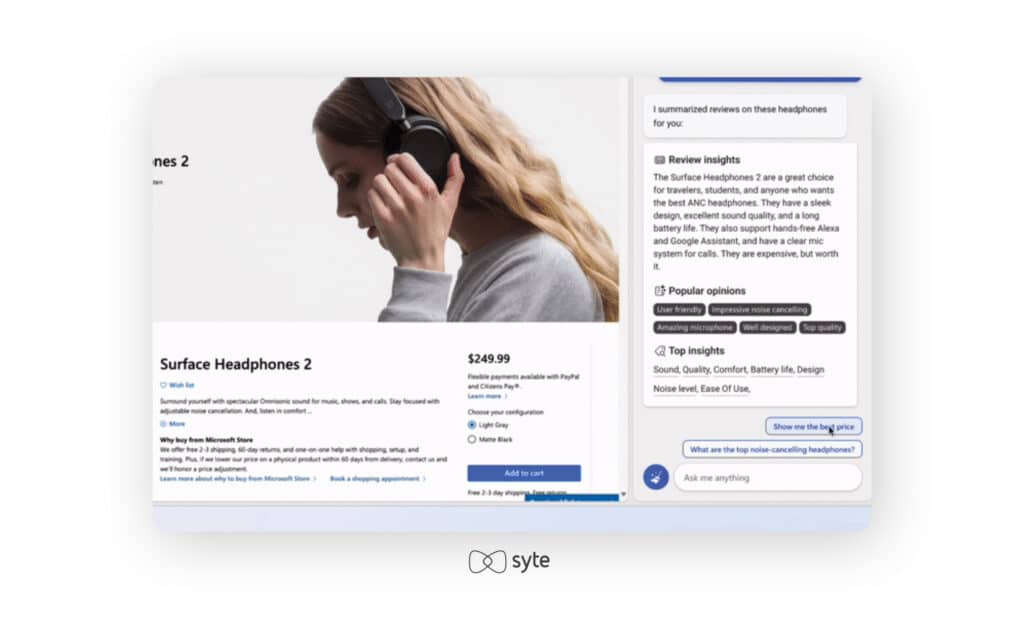
2. Visual search
Customers often lack the vocabulary to find the products they want. With visual search, brands bridge the gap and make the hunt more fun and intuitive – all it requires from a shopper is an uploaded image. With AI breaking down the visual data, you can immediately surface highly relevant product suggestions. Even without a photo on hand, customers can click on inspirational photos to begin a product discovery journey. The technology is most used by younger shoppers aged 18 to 34, so brands with younger target audiences would be wise to provide this shopping pathway during BFCM.

3. Thematic collections
Extensive inventory means that you have the variety shoppers are looking for – but it also presents challenges when it comes to product discovery. Making your product catalogue accessible to site visitors is particularly important during Black Friday and Cyber Monday, when shopping stress (and competition) is high. By using visual AI to tag products on the backend of your retail operations, you can group items with specific attributes to create collections that will be easy for shoppers to browse through. For example, you can group all jewelry items with a heart motif that are also silver and gold, and share a heart-themed collection that is easy and accessible to shop, even for rushed BFCM visitors.
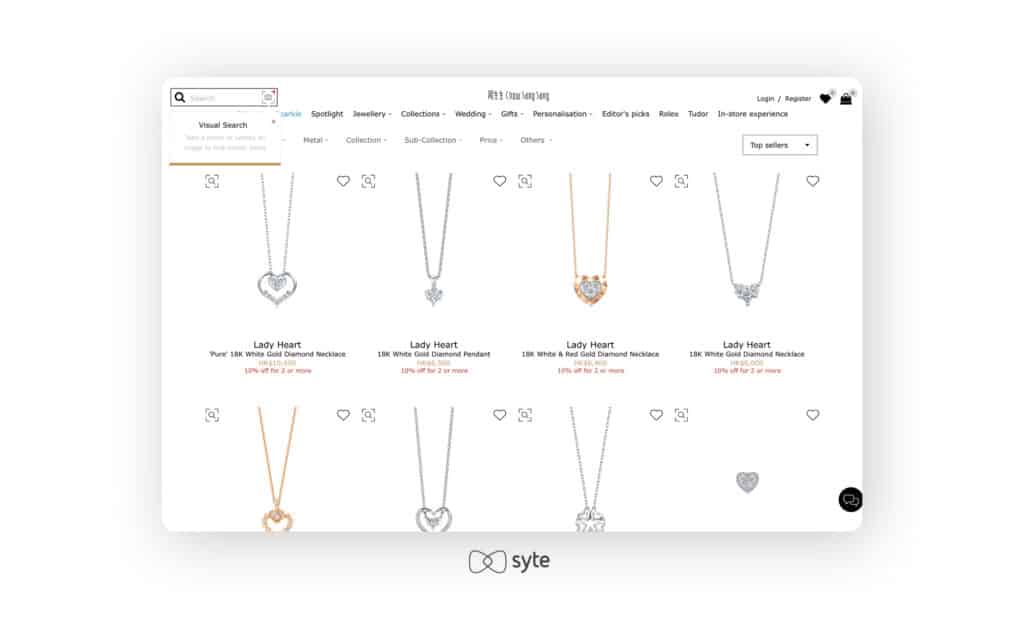
4. AI-powered product recommendations
Tailored suggestions such as “Shop the Look” and “You Might Also Like” enhance the shopping experience by offering relevant products, streamlining decision-making, and increasing purchase likelihood. By using visual and predictive AI respectively, these recommendation carousels present customers with items that align with their interests and shopping journey. Personalized recommendations create a more engaging and efficient shopping journey, leading to higher customer satisfaction and loyalty. Moreover, these recommendations facilitate serendipitous discoveries, exposing customers to products they may not have otherwise encountered. At least 54% of retailers identified product recommendations as the primary factor influencing their AOV.
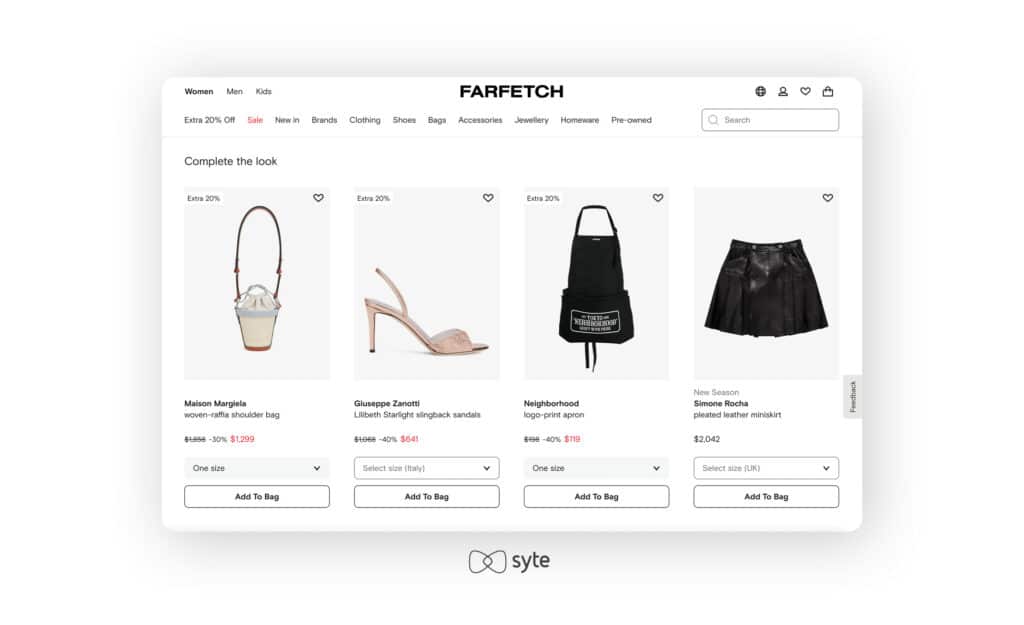
5. Dynamic emails
Emails are an important way to maintain a connection with shoppers leading up to BFCM: 46% of smartphone users prefer to receive communications via email. Dynamic emails use AI to enable brands to retarget shoppers with visually customized content based on the customer’s intent and browsing history. By tailoring email content to individual preferences, dynamic emails provide a personalized and relevant experience, significantly increasing conversion rates. These emails include interactive elements, customized product recommendations, and time-limited offers to entice customers to return, discover new products, and make purchases.

6. Chatbots
AI-powered chatbots offer customers instant and automated assistance, addressing common queries, providing product information, and guiding customers through their purchases. They also enhance customer service by offering prompt and accurate responses while reducing the workload on human support teams. Customers can receive real-time support, obtain relevant product details, and have their questions answered efficiently. By 2027, Gartner predicts that chatbots will serve as the primary customer service tool for a quarter of companies. On Black Friday weekend, when resources are tied up, providing efficient support via chatbot is a powerful way to maintain customer satisfaction amid the shopping rush.
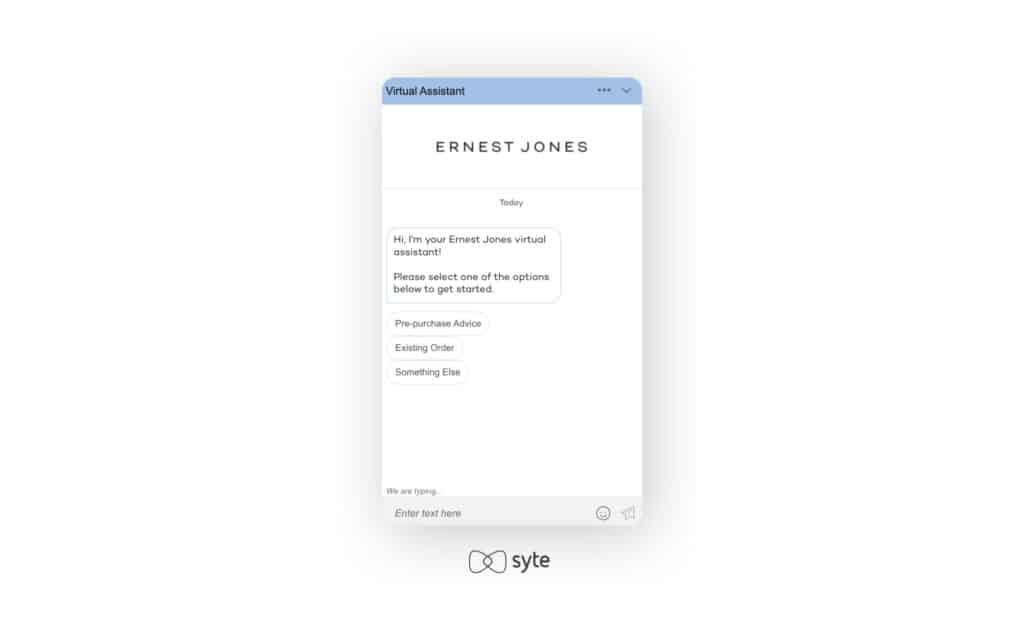
7. Voice assistants
With voice assistants, customers can use their voice to search for products, add items to their carts, and even complete purchases. Voice-based shopping eliminates the need for manual searching and typing, streamlining the entire process. Customers can simply speak their requests, and the voice assistants provide accurate and efficient results. This technology allows for hands-free shopping, making it particularly convenient when customers have limited mobility or are engaged in other tasks. Voice assistants are projected to be lucrative for brands, and are expected to reach $19.4 billion in sales in 2023.
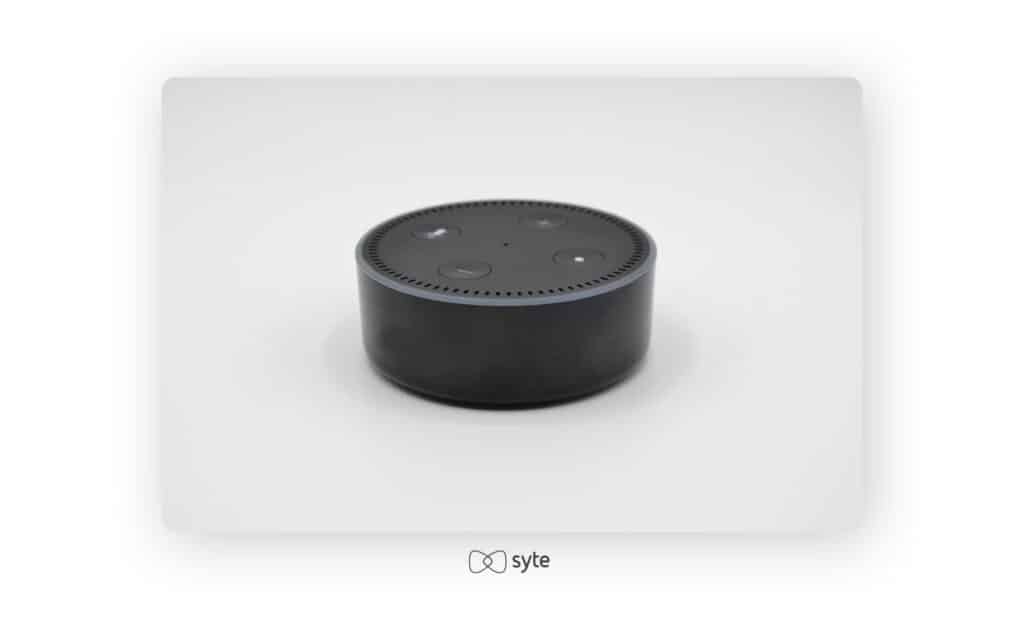
8. AI styling
Consumers are embracing virtual personal shoppers as a valuable tool to guide them to their ideal products as well as to find suitable gifts. Using a combination of visual and generative AI, eCommerce styling tools can take visual input and recommend complementary items that will align with a shopper’s aesthetic taste. This level of tailored assistance increases engagement and encourages customers to explore more products, ultimately driving higher revenue per shopper for retailers. It’s also an excellent way to guide shoppers during BFCM – they can simply upload an image of an item a friend or relative likes, and immediately receive personalized suggestions.

9. Augmented and virtual reality
While AR and VR are not artificial intelligence in and of themselves, these powerful technologies can be combined to create a more immersive and interactive approach to shopping. In fact, at least 61% of consumers prefer brands that provide AR experiences. With AR tools, customers can virtually try on products, such as clothing or accessories, and visualize how items would look in their own environment using computer vision. Meanwhile, VR takes it a step further by enabling customers to explore virtual stores and engage with products in a simulated environment.

10. Auto-generated product descriptions
Product descriptions play a crucial role in the shopping experience, providing critical information to shoppers. An overwhelming 85% of shoppers say product information is important to them when deciding where to purchase. With advancements in AI, retailers can generate unique product descriptions automatically using generative AI and detailed product metadata. This automation saves time and enhances efficiency, enabling customers to access detailed information about products without delay.

11. Omnichannel personalization
Analyzing customer activities across various devices and channels allows brands to create a universal customer view that conveys a deep grasp of shopper intent and context. This in-depth understanding makes it possible for retailers to deliver a seamless experience across all platforms while also tailoring recommendations, offers, and interactions to meet unique preferences and needs. Done right, omnichannel personalization can bring shoppers from in-store to online and vice versa to continue purchasing throughout BFCM weekend and beyond.

AI Empowers Customers and Retailers Alike During BFCM
AI for eCommerce is very much in its early stages, and already, the impact of visual AI, generative AI, and predictive AI on customer experience and backend retail operations is impossible to ignore. Brands and retailers looking to have an exceptional Black Friday weekend and holiday season need to invest in AI-based experiences early on to ensure smooth sailing for their shoppers this November.